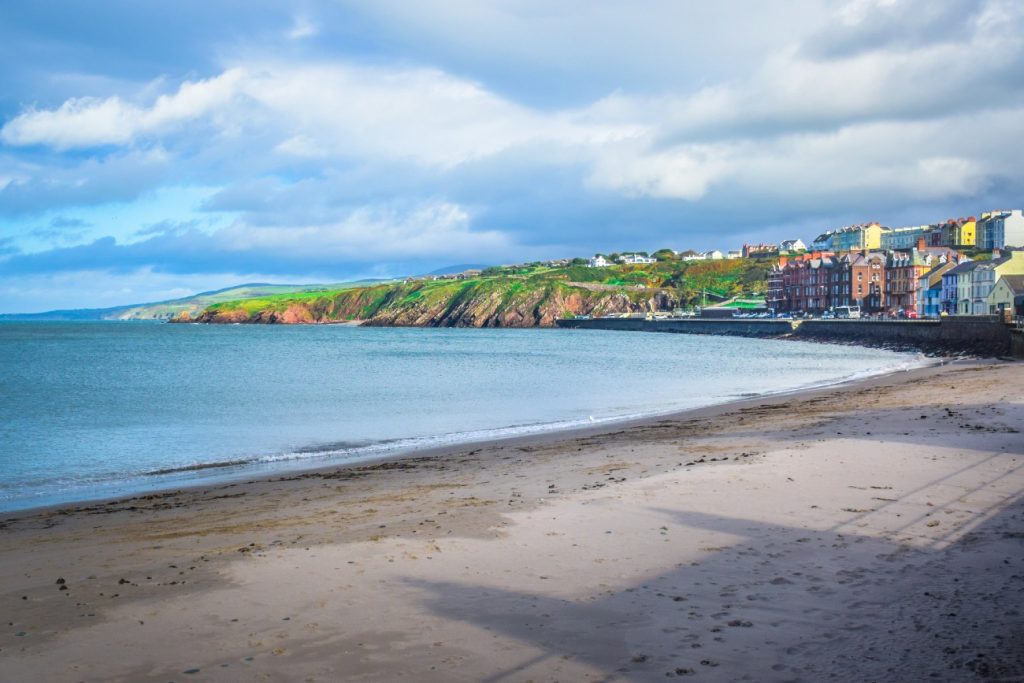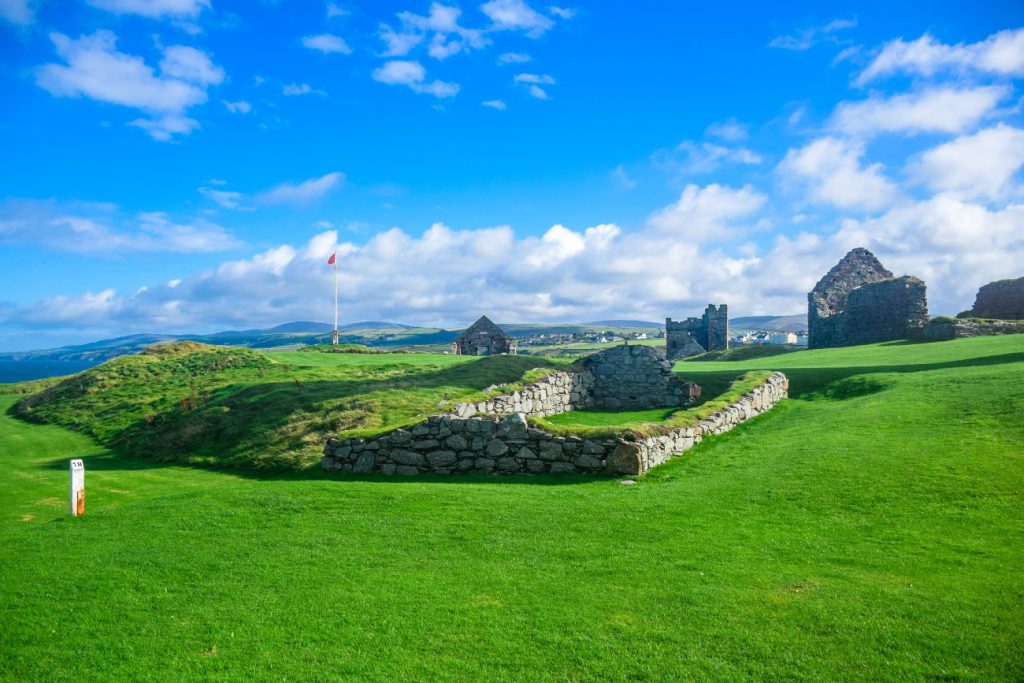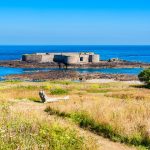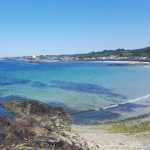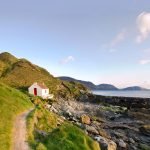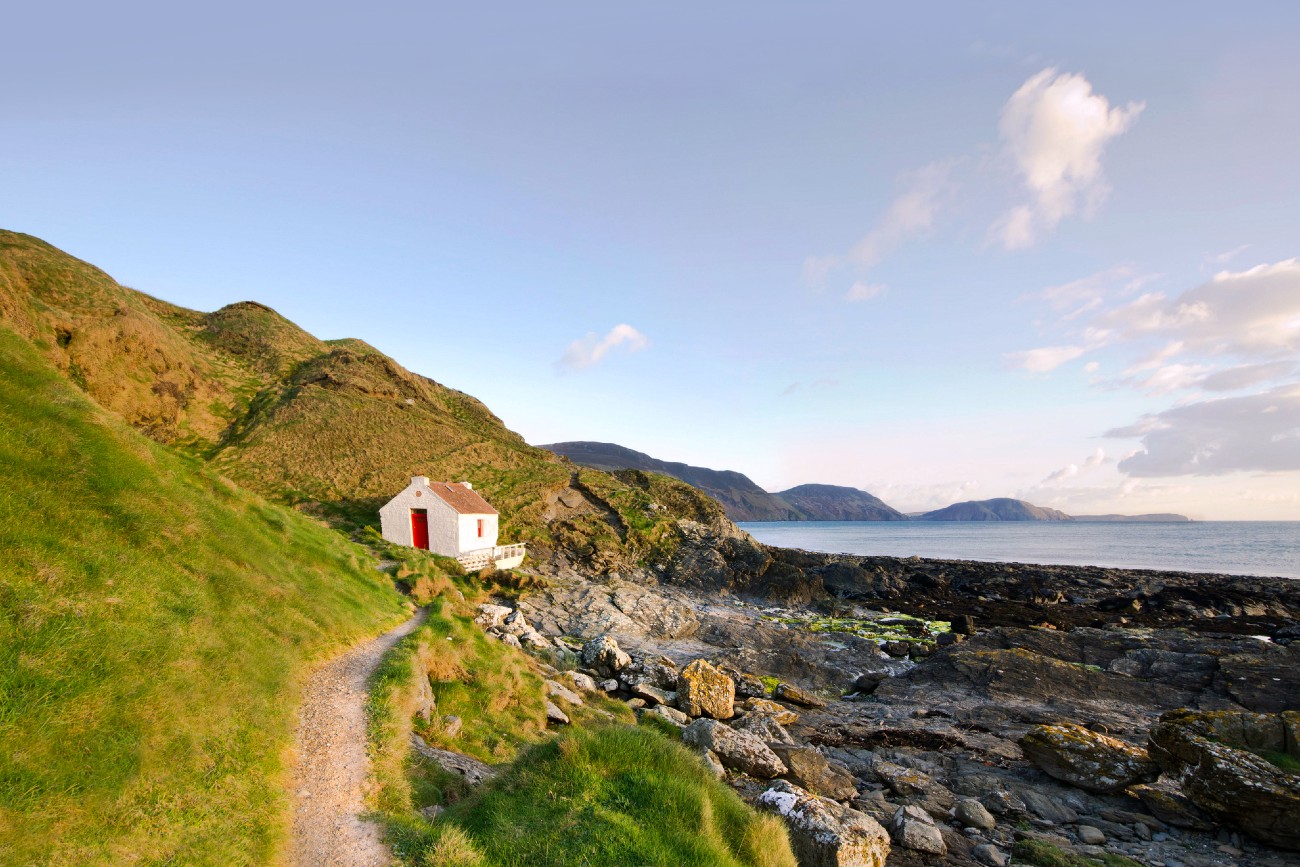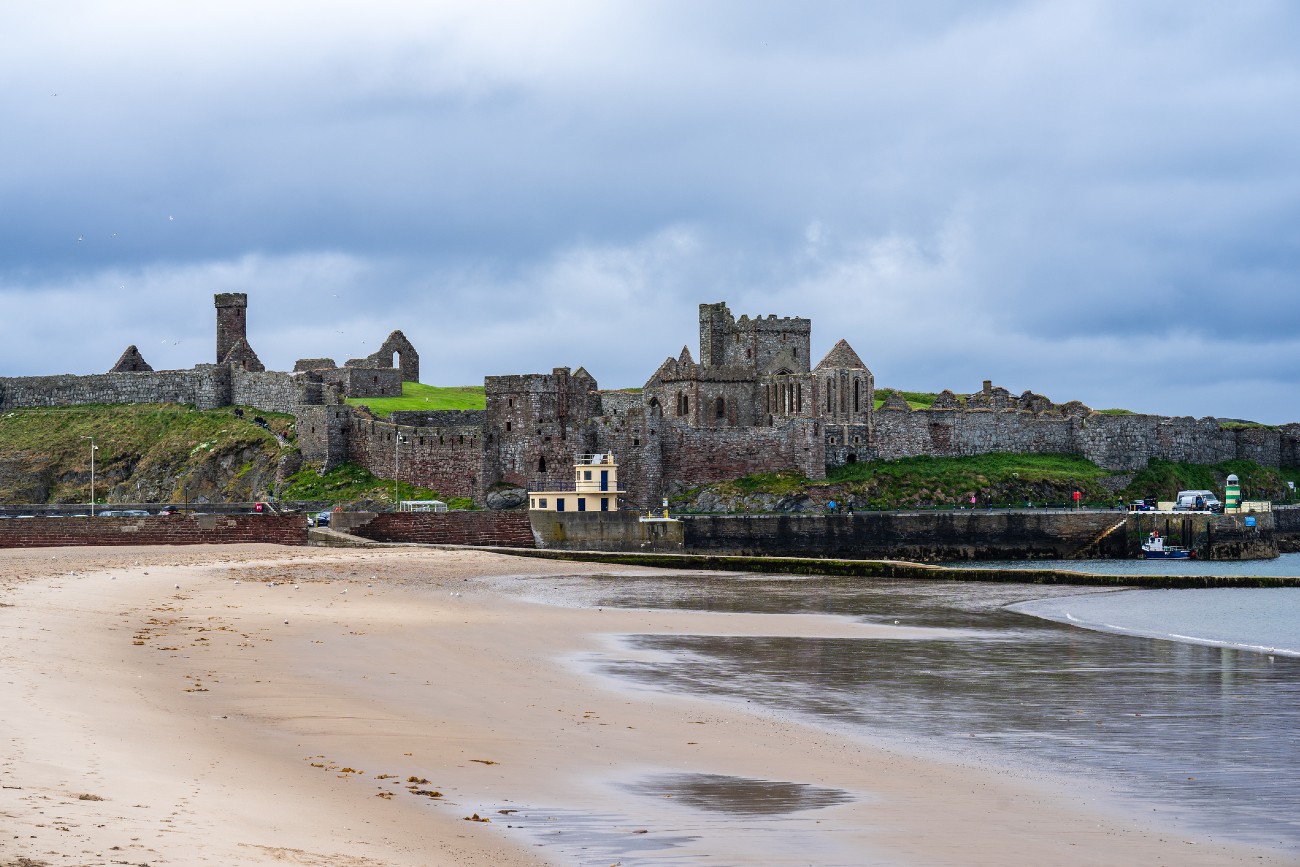
The seaside town and coastal fishing port of Peel is the Isle of Man’s third largest settlement. It’s situated on the western coast and is a place that is rich in both culture and history, making it an interesting destination for the curious traveller.
At the town’s southern end, the scenic harbour gives way to the base of Peel Hill – a popular walking route. The hill stands at 501 feet above sea level, with the summit being accessed by a short route up a grassy ridge. The ascent is gradual – making it great for those who are looking for an easy walk – and I assure you that the views at the top can be very rewarding.
The summit of Peel Hill overlooks the town and a large stretch of open ocean, with its elevation above the landscape providing incredible views south to Niarbyl Bay and the Calf of Man, as the hills of Slieu Whallian and South Barrule rise up in the background. The summit is home to a large tower that goes by the name of Corrin’s Folly.
This stone monument was built around 1806 for Thomas Corrin, who owned large parts of the nearby land. Peel Hill was one of his favourite spots on the island and a small graveyard sits adjacent to the tower, marking the site where his beloved family were buried. Although the tower itself is not open to the public, it can be an intriguing landmark to visit nonetheless.
A descent from Peel Hill can be made via a different route which winds its way down the other side of the mountain. I drove also to St Patrick’s Well. Also known as the Silver Well, this is thought to be the place where St Patrick of Ireland first planted the sign of the cross. As an offering to him, ancient inhabitants often left small pieces of silver here, giving the well its alternative name.
St Patrick’s Isle
Peel is often referred to as the ‘Sunset City’, as its west-facing position gives it a front row seat to the magnificent sunsets that grace the western skies. One of the best places to watch these colourful natural events is Peel Beach, located at the northern edge of the town.
This sloping stretch of sand is popular among tourists and locals, and is a great place for sunbathing or swimming on warm days. It also has some interesting views across the water to St Patrick’s Isle. When the weather allows I usually spend a significant amount of time on Peel Beach with my friends, having picnic and chatting all day long.
This small islet is linked to the mainland via a causeway and is one of the smallest islands in the Irish Sea. Despite its size, St Patrick’s Isle has a surprising amount of history behind it, with human influence extending back over 8,000 years. History tells that this was the place where St Patrick originally set foot on the Isle of Man, on a mission to bring Christianity to the island. Churches and monasteries sprung up in his wake, before being replaced by the military stronghold of Peel Castle.
This castle still stands today and is a formidable presence, with its extensive grounds and large towers making it a great destination for a day trip.
Its position on the coast also means it’s ideal for wildlife watching. The waters surrounding Peel are home to basking sharks in the summer months, with these ocean giants visiting the Manx coastline to feed. There is also a small population of seals in the region, who can often be spotted bobbing in the water nearby.
- Peel Beach
- Peel Castle on top of Peel Hill
Clowning Around
There is much to see on a visit to Peel Hill and the surrounding area, however the coastline here is one of the few places on the Isle of Man where you can find the Atlantic puffin, also known as the ‘clown of the ocean’. These seabirds are some of the most colourful in the British Isles, with their black and white plumage being complimented by bright orange bills. Unsurprisingly, these bills are partly for show, with brighter colours being seen as more attractive to other puffins. Male puffins like to flaunt their bills in the breeding season for this reason.
The bills are not just used to attract a mate, they’re also a puffin’s primary weapon on the hunt for fish. Sandeels are their favourite meal, which they catch by diving underwater and swimming in pursuit, using their wings to propel them. Puffins visit the Manx coast from March until August, spending the rest of the year out at sea. During their time of the island, they breed and give birth to eggs, with the cliffs around Peel Hill being a key nesting site. If you’re lucky, a walk along the coastline here during summer might reward you with views of these charismatic seabirds.
Peel Hill is one of the best places on the Isle of Man to absorb the island’s intriguing heritage. With pleasant walking opportunities and fantastic coastal views, it’s a wonderful destination, topped off by being a great place to spot wildlife.
Would you like to learn more about other interesting places on the island? Then don’t miss the following article: Sunsets And Shark Watching – Niarbyl Bay


